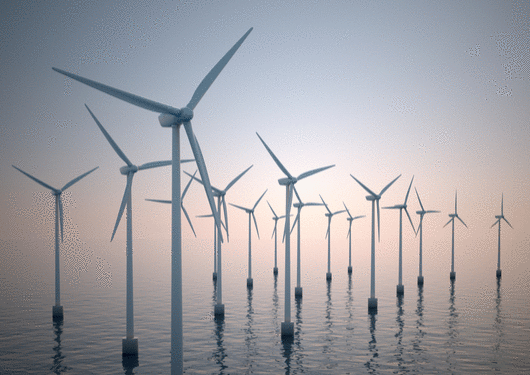
Visit Our Sponsors |
|
|
|
|
|
|
|
|
|
|
|
|
|
|
|
|
|
|
|
|
|
|
|
|
|
|
|
|
|
|
|
|
|
|
|
|
|
|

Carnegie's Anna Possner and Ken Caldeira found that, because wind speeds are higher on average over ocean than over land, wind turbines in the open ocean could in theory intercept more than five times as much energy as wind turbines over land. This presents an enticing opportunity for generating renewable energy through wind turbines. But it was unknown whether the faster ocean winds could actually be converted to increased amounts of electricity.
Most of the energy captured by large wind farms originates higher up in the atmosphere and is transported down to the surface where the turbines may extract this energy. Other studies have estimated that there is a maximum rate of electricity generation for land-based wind farms, and have concluded that this maximum rate of energy extraction is limited by the rate at which energy is moved down from faster, higher up winds.
Possner and Caldeira used sophisticated modeling tools to compare the productivity of large Kansas wind farms to massive, theoretical open-ocean wind farms and found that in some areas ocean-based wind farms could generate at least three times more power than the ones on land.
In the North Atlantic, in particular, the drag introduced by wind turbines would not slow down winds as much as they would on land, Possner and Caldeira found. This is largely due to the fact that large amounts of heat pour out of the North Atlantic Ocean and into the overlying atmosphere, especially during the winter. This contrast in surface warming along the U.S. coast drives the frequent generation of cyclones, or low-pressure systems, that cross the Atlantic and are very efficient in drawing the upper atmosphere’s energy down to the height of the turbines.
RELATED CONTENT
RELATED VIDEOS
Timely, incisive articles delivered directly to your inbox.

